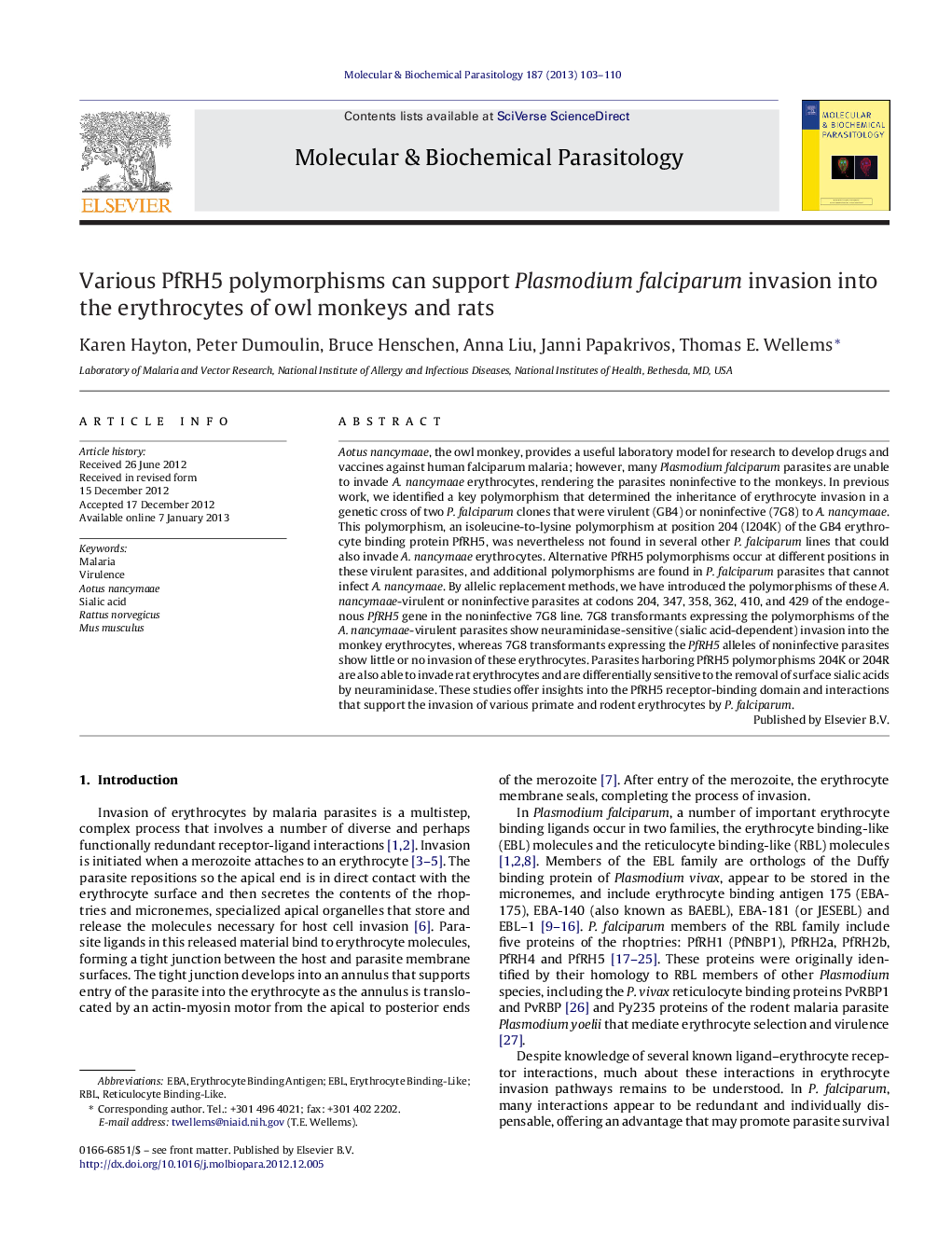| Article ID | Journal | Published Year | Pages | File Type |
|---|---|---|---|---|
| 5915494 | Molecular and Biochemical Parasitology | 2013 | 8 Pages |
Aotus nancymaae, the owl monkey, provides a useful laboratory model for research to develop drugs and vaccines against human falciparum malaria; however, many Plasmodium falciparum parasites are unable to invade A. nancymaae erythrocytes, rendering the parasites noninfective to the monkeys. In previous work, we identified a key polymorphism that determined the inheritance of erythrocyte invasion in a genetic cross of two P. falciparum clones that were virulent (GB4) or noninfective (7G8) to A. nancymaae. This polymorphism, an isoleucine-to-lysine polymorphism at position 204 (I204K) of the GB4 erythrocyte binding protein PfRH5, was nevertheless not found in several other P. falciparum lines that could also invade A. nancymaae erythrocytes. Alternative PfRH5 polymorphisms occur at different positions in these virulent parasites, and additional polymorphisms are found in P. falciparum parasites that cannot infect A. nancymaae. By allelic replacement methods, we have introduced the polymorphisms of these A. nancymaae-virulent or noninfective parasites at codons 204, 347, 358, 362, 410, and 429 of the endogenous PfRH5 gene in the noninfective 7G8 line. 7G8 transformants expressing the polymorphisms of the A. nancymaae-virulent parasites show neuraminidase-sensitive (sialic acid-dependent) invasion into the monkey erythrocytes, whereas 7G8 transformants expressing the PfRH5 alleles of noninfective parasites show little or no invasion of these erythrocytes. Parasites harboring PfRH5 polymorphisms 204K or 204R are also able to invade rat erythrocytes and are differentially sensitive to the removal of surface sialic acids by neuraminidase. These studies offer insights into the PfRH5 receptor-binding domain and interactions that support the invasion of various primate and rodent erythrocytes by P. falciparum.
Graphical abstract. Relative invasion of owl monkey erythrocytes by Plasmodium falciparam by 7G8 parasites expressing polymorphisms of different PfRH5 allels.Download high-res image (205KB)Download full-size imageHighlights⺠Only some P. falciparum (Pf) lines are able to infect Aotus nancymaae (owl) monkeys ⺠Various PfRH5 alleles in these lines support infection of monkey erythrocytes (RBC) ⺠Non-invasive Pf parasites (7G8) become invasive when transformed by these alleles ⺠Invasion of owl monkey RBC by the 7G8 transformants is sialic acid-dependent ⺠Rat RBC can be invaded by 7G8 transformants expressing PfRH5 I204K or I204R.
